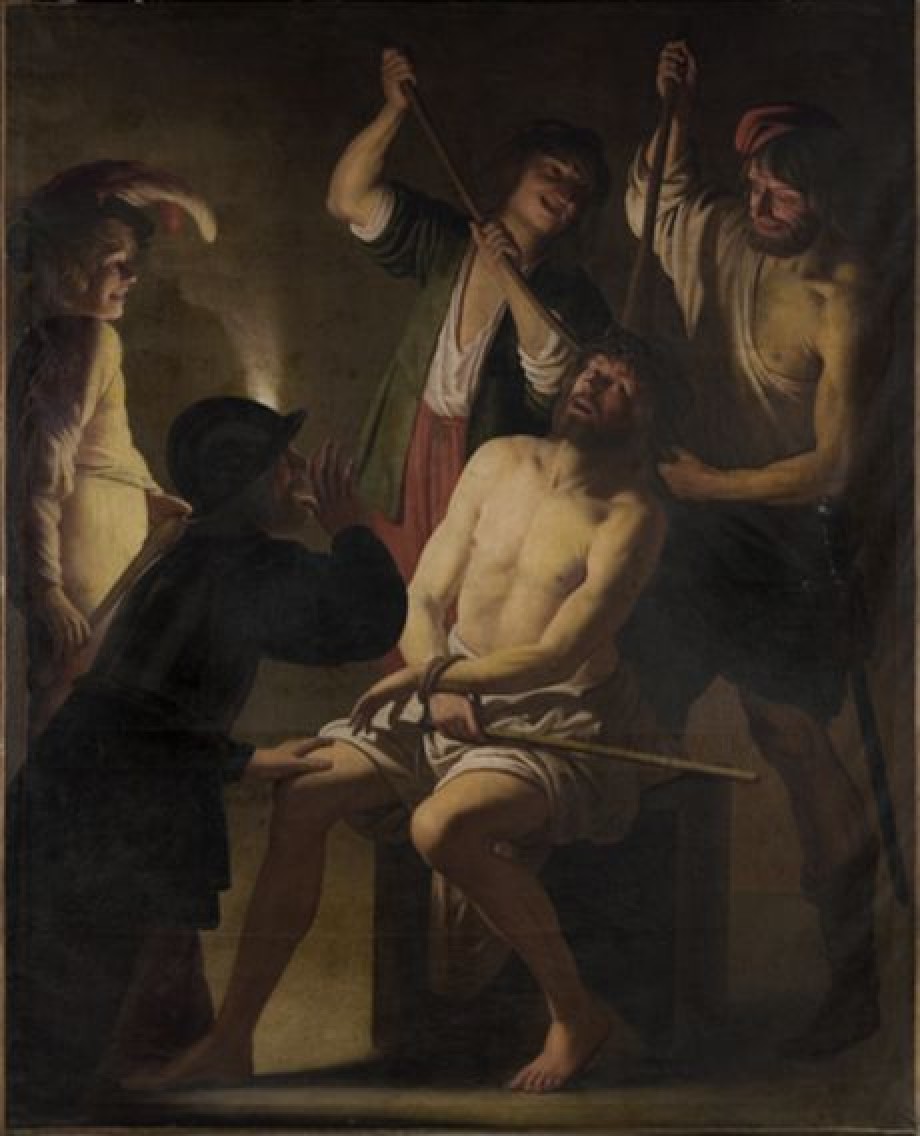
Jan Janssens
More about Jan Janssens
Jan Janssens is a Ghent painter and draftsman. He is the most successful of the so-called Ghent Caravaggians. Between 1619 and 1620 he stays in Rome where he becomes acquainted with the so-called Utrecht Caravaggianism of Hendrik ter Brugghen (1588-1629), Gerard van Honthorst (1592-1656) and Dirck van Baburen (1594/95-1624). He is also influenced by the work of Bartolomeo Manfredi (ca. 1582-1622). Janssens brings the Caravaggio style back with him to Ghent, where he becomes requested for altarpieces. Now and then Janssens completes paintings for an international clientele.
Janssens primarily paints Biblical themes on large format. Favourite themes are Christ crowned with thorns and the mockery of Christ. With his merciless and sober realism and dramatic effects with hidden light that shines on his figures, Janssens responds to the prescriptions of the Counter Reformation. People speak of the emotional impact of his paintings.
There is little known about this underappreciated artist. For a long time, people thought that he was a so-called commercial artist. Reasons for this on the one hand are the scarcity of sources and the works, and on the other hand because of the many copies and replicas that are in circulation. One of his masterpieces is The Martyrdom of Saint Barbara (In actuality, it deals with Saint Agatha). (Saint Michael's Church, Ghent)
7 August 1590
Jan Janssens is born in Ghent.
1619-1620
The artist is active in Rome.
1621
Janssens is active in Ghent. In 1621, he becomes Free Master in the Ghent painters' guild. In that year, he paints Saint Jerome, an epitaph for the grave of his father Johannes Govaert Janssens. (Saint Nicholas' Church, Ghent)
29 August 1623
Petronilla de Rop and Jan Janssesn are married. The couple has 6 children.
1626
The Brotherhood of the Holy Cross orders a work for the Saint Michael's Church in Ghent, but it is ultimately Abraham (I) Janssens (1567-1632) who delivers the work.
1627
Janssens paints Christ Crowned with Thorns for the Our Lady of Saint Peter's Church in Ghent.
1634-1635
In these years, Janssens fulfills the function as dean of the Ghent painters' guild.
1636
The lay judges of Doornik ask Janssens to witness in a case of fraud concerning rapeseed oil being sold as linseed oil.
1640
In this year, Janssens receives the commission from the Brotherhood of Our Lady of Radiën to make a work for the Ghent Saint Bavo Cathedral. In 1644, the painting is delivered, not by Janssens, but by Nicolaas Liemaker (1601-1646).
1646
Janssens is dean of the Ghent painters' guild.
Circa 1650
Jan Janssens dies in Ghent. His house, De Pijl (The Arrow) is sold.
Text: Matthias Depoorter



